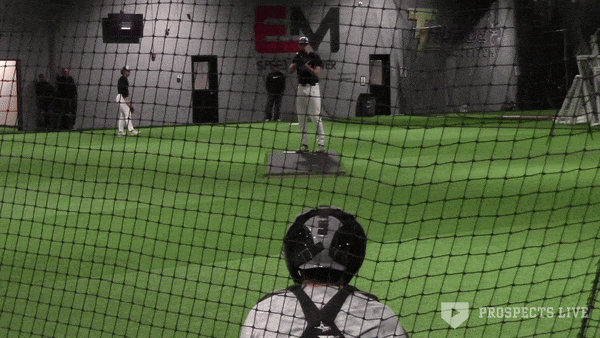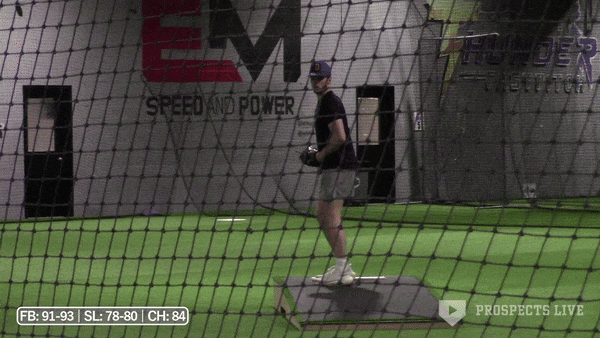Live Looks: High-A Spokane Indians at Everett AquaSox
This week marked the final week in the 2024 regular season for Advanced A-ball. As such, it was my last chance to catch a couple of high-profile prospects in Everett. With the Indians in town, that gave me a chance to see the 2024 third-overall pick, Charlie Condon. Also in the mix were Colt Emerson, Cole Carrigg, and Michael Arroyo. The AquaSox got out to an early 3-0 lead by the top of the fifth inning, but Spokane stormed back. A foul-tip non-call plated a run in what turned into a three-run inning for the Indians. From there, they never looked back. Spokane scored again in the sixth, seventh, and eighth innings en route to an 8-4 victory over Everett. Notable prospects playing for the Indians included Charlie Condon (Rockies no. 1), Cole Carrigg (Rockies no. 7), Dyan Jorge (Rockies no. 15), and Kyle Karros (Rockies no. 18). LHP Welinton Herrera also made an appearance. He’s unranked but was featured in our underrated National League prospects earlier this month.
For the AquaSox, top prospects in this one included Colt Emerson (Mariners no. 1), Lazaro Montes (Mariners no. 3), Michael Arroyo (Mariners no. 12), and Jared Sundstrom (Mariners no. 30). It was a prospect-heavy matchup with plenty of takeaways to be found.
OF Charlie Condon (Rockies no. 1): 0/4, BB
It’s been far from smooth sailing for this year’s third-overall pick. None of that changed in the season’s final week, or in the game I attended on Wednesday. Condon failed to make any real hard contact on the night. Even the contact he made was stock full of pop-ups and weak foul balls. At one point, he entered the game with the bases loaded and one out. It was a key, clutch situation that saw Condon ground into an inning ending double play. Condon was visually frustrated most of the night, and it’s clear that he’s beginning to press a bit too much at the plate. An offseason will do him well. After the double-play groundout, Condon slammed his helmet to the dirt just past first base. Following a pop out to the catcher in another at-bat, Condon stood at the plate for an extra moment in clear frustration.
Much of Condon’s struggles at the plate looked to stem from a lack of confidence. On numerous occasions early, Condon would check his swing on hittable pitches. It seemed as if he was having a hard time with pitch recognition. More often, he’s simply swinging for elevation too much. Condon’s swing path could be straighter to the baseball. Instead, on his groundouts, Condon would swing upward and ahead of the pitch. It’s a poor swing plane that simply isn’t working right now. An offseason adjustment and some time off would suit the Rockies’ top prospect well. The talent is still clear for next season and beyond.
SS Colt Emerson (Mariners no. 1): 1/4, BB
Emerson has had a slow start since moving up to High-A earlier this season. Despite those struggles, he looks the part. Emerson has posted an excellent 83.8% zone contact rate with the AquaSox. His 19.4% whiff rate is among the best in the league and he rarely chases at just 17.4%. All of those things point to much better things to come from Emerson. In his lone hit on the night, Emerson got around quickly on a hittable pitch, lining a grounder into the outfield for a hit. His swing path is excellent and great bat speed really shines. Emerson passes the eye test on the diamond as well. His movement at shortstop is fluid with great footwork and a strong arm. The arm is accurate as well. He very well might grow into a third base profile, but he has the makings of an All-Star shortstop if he sticks there.
OF Cole Carrigg (Rockies no. 7): 1/4, HR, BB, 2 RBI
Carrigg had one of the best swings of the night. In the top of the eighth, Carrigg connected on a breaking ball, lifting it deep to right-center for a home run. His swing looks long at times, but his bat speed more than makes up for that. He put together a quality plate appearance every time he went to the plate in this one. Defensively, there weren’t many opportunities for Carrigg’s elite arm to factor in. He looked good in the field when given the chance to make a play and has the makings of a good big league center fielder. Despite the home run, Carrigg’s hit tool remains ahead of his power at this stage and should be good enough to carry the offensive profile. He also stole two bags on the night to help keep the runs coming for the Indians. That speed and defense provide an excellent floor for Carrigg as he continues to develop.
OF Lazaro Montes (Mariners no. 3): 0/5, SO
It was a difficult night at the plate for Montes. Beyond just the results, he simply didn’t put together many solid plate appearances. He worked the count in his first at-bat, eventually grounding out. His next two at-bats were balls in play for an out, swinging at the first pitch. He followed those two up with a three-pitch strikeout swinging. Montes was the final out of the game in his fifth plate appearance of the night, grounding out on — you guessed it — the very first pitch he saw. That makes five plate appearances for Montes and a grand total of 12 pitches seen. Six of those came in his first at-bat of the game. The outstanding raw power is evident at times, but the current focus on Montes has to be better pitch recognition and plate discipline. His whiff rate has ballooned to 35.3% with the AquaSox and he’s struggling to make contact. Until those things change, Montes may potentially offer a 30-grade hit tool that’ll make it difficult to get to his immense raw power.
2b Michael Arroyo (Mariners no. 12): 0/4, K
Michael Arroyo was uber-aggressive at the plate as well, much like Montes. He swung at the first pitch he saw to open the game with a quick groundout. Arroyo was able to get on base by hit-by-pitch in his next appearance but was picked off on the basepaths between second and third. His next plate appearance was a groundout on the second pitch. Arroyo’s final two at-bats of the evening featured a flyout on the first pitch, followed by a four-pitch strikeout. The season stat line for Arroyo has been great so far and he makes a lot of contact at the plate. Unfortunately, on nights like this one, that doesn’t always result in good contact. There’s a solid hit tool with Arroyo, but it’s unlikely he’ll add much power, and both fundamentally and defensively it can be rough. Arroyo committed one error and accompanied that with a handful of errant throws. He did make one excellent diving stop at one point, but the arm is difficult to trust at this point in his development.
3B Kyle Karros (Rockies no. 18): 2/4, RBI, BB
Cole Carrigg had the most standout performance of the game, but Kyle Karros wasn’t terribly far behind. He manned the hot corner and notched two hits. He got on base three times with sound swing mechanics. Karros put together quite a few gritty plate appearances. He has a great approach at the plate and regularly works a count well. He saw an average of seven pitches per plate appearance in this one. In the field, Karros also made an excellent diving stop with a strong throw to first to beat the runner. Long-term, it doesn’t appear that Karros offers the power profile needed to stick at third base. His hit tool should be at least average, and he has a strong enough arm to move to a corner outfield spot where his lack of power may be more suitable.





























